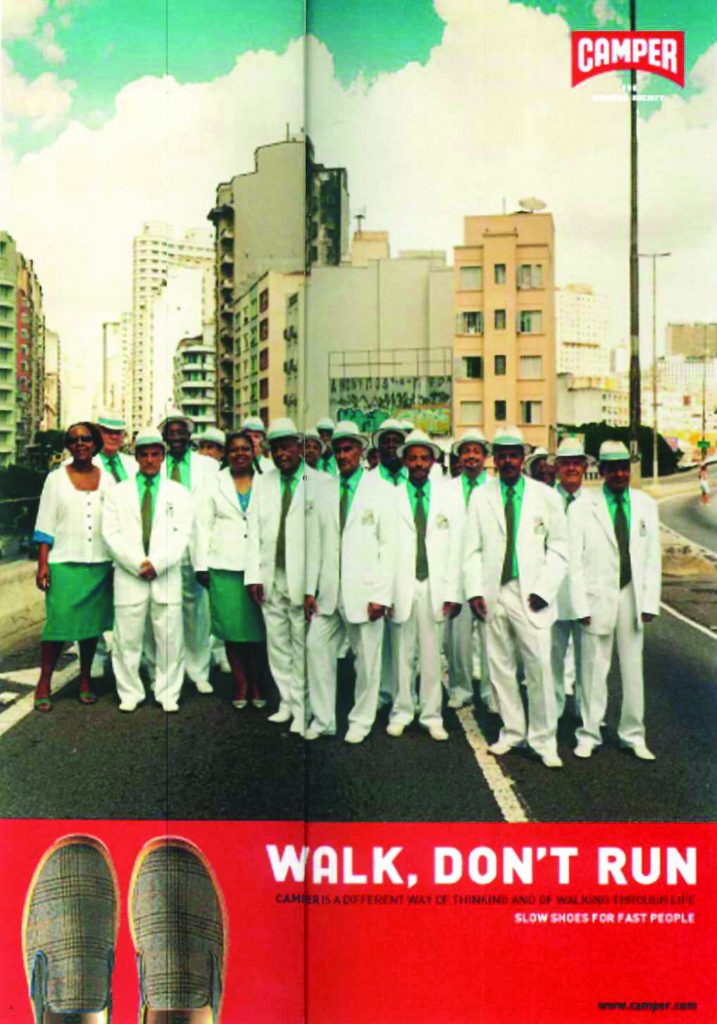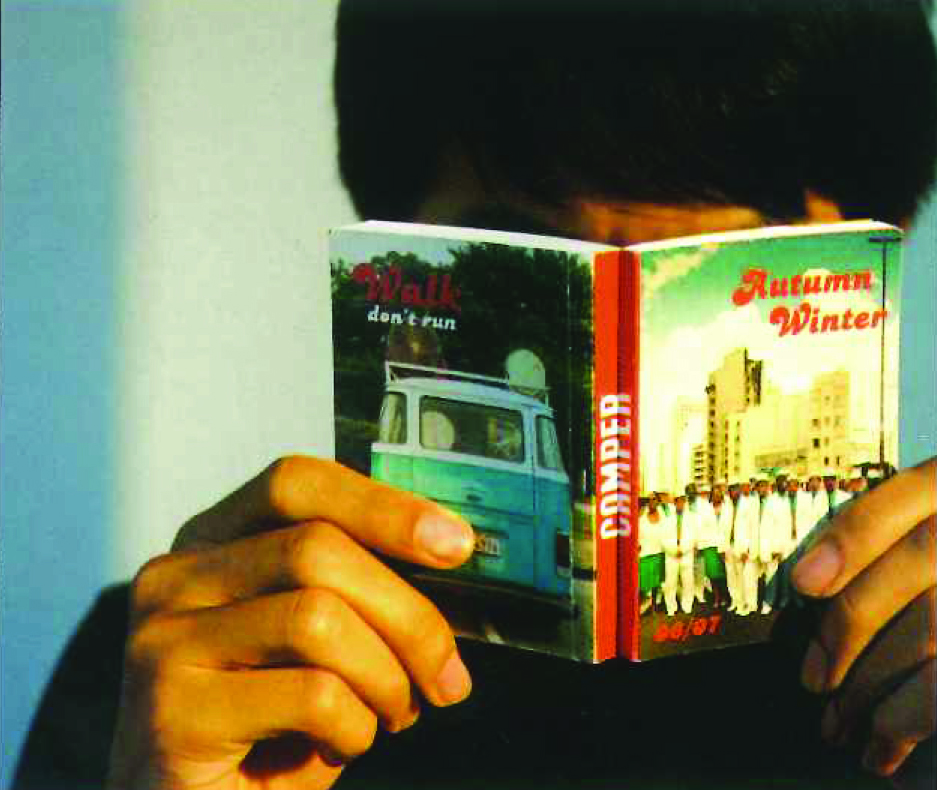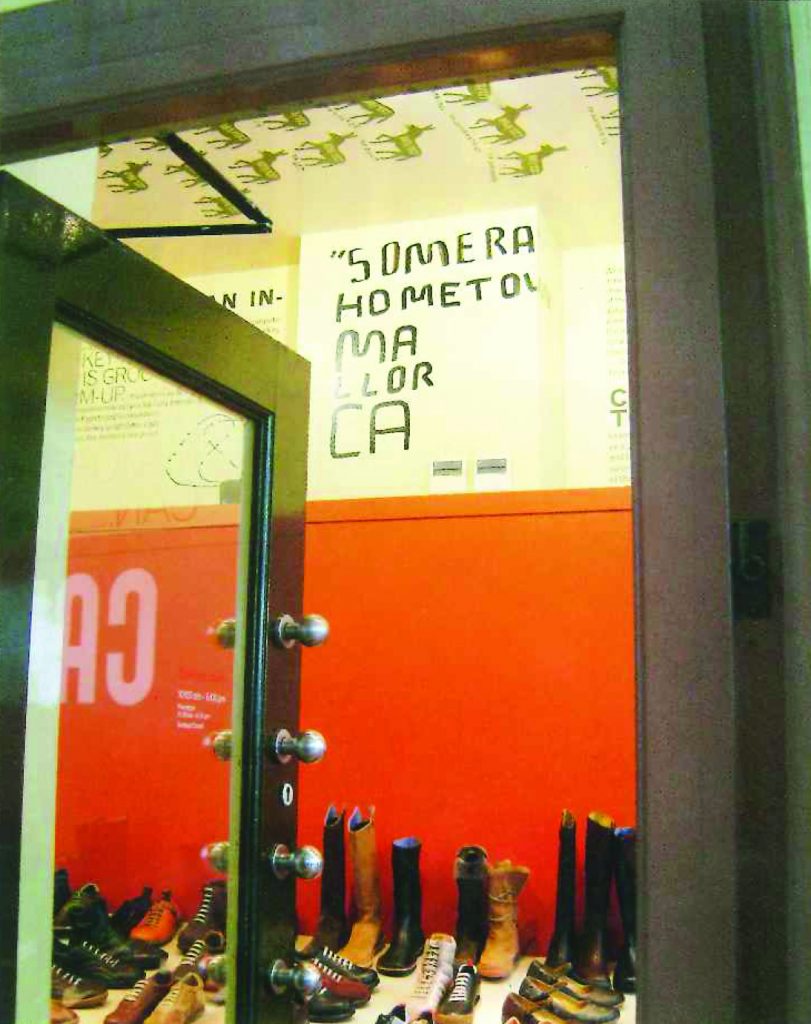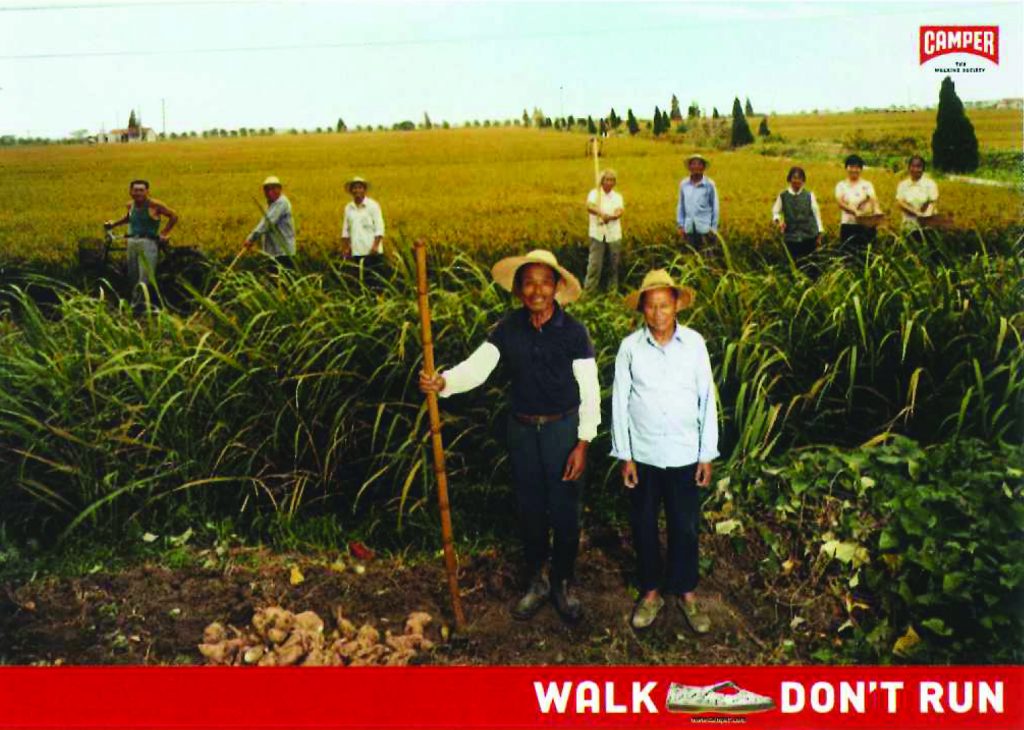THE FOLLOWING CONVERSATION WITH CAMPER’S CREATIVE DIRECTOR, SHUBHANKAR RAY, MAY THROW SOME LIGHT ON COEXISTING WITH CAPITALISM IN A SOPHISTICATED WAY
On the occasion that Shubhankar Ray, who knows as creative director and brand director of many global fashion and lifestyle brands, came to the lecture at the 2006 Creativities unfold, Bangkok. Piyapong Bhumichitra took an opportunity to speak with Ray which at that time he served as the creative director of CAMPER, the footwear brand, filled with cultural inheritance.

TEXT: PIYAPONG BHUMICHITRA
PHOTO COURTESY OF CAMPER
(For Thai, press here)
The idea of a sufficient economy has today overtaken our thinking and been brought into the main stream of Thai society. If its definition is based on becoming sufficient economy, also in terms of establishing a strong foundation of the entire business sector, then why is the Thai government still proclaiming an overall policy that is imbalanced? And where is the real ideology of the term ‘self-sufficient’? Business by nature requires extensive development and some say that this is almost impossible to do by using the idea of sufficient economy. The following conversation with CAMPER’s creative director, Shubhankar Ray, may throw some light on coexisting with capitalism in a sophisticated way.
Cultural Brand
Tracing back to a century ago, Antonio Fluxà began his small family business that was part of the shoe industry in Majorca, Spain. In 1975, Lorenzo Fluxà, Antonio’s grandson, wanted to create a shoe brand, and that is the start of the story behind CAMPER, a Catalan word that means ‘peasant’.
Their first shop opened in Barcelona in 1981 and about a decade later CAMPER had expanded their business to other parts of Europe, including the fashion centers of Milan, Paris, and London. The brand, filled with cultural inheritance, is mainly concerned with form and function that is transferred to the products. And this is one of the reasons why Shubhankar Ray joined CAMPER in 2000, and ever since has played a big part in developing CAMPER’s identity as it stands today.
Diversity
Most fashion brands lay down their lines on a basis of elegance and stylish designs, and on technological concerns. CAMPER, however, has adopted brand strategy heading in the binary opposition. When the time came, seven years ago, Ray was talking with the owner about developing a range that operated in the same level as the one by Miuccia Prada. There’s not much difference between products nowadays as brands have the possibility of making any product because they can access any designer, factory, and many different kinds of material, Thus it ends up with less product differentiation, seemingly to Anglo-American culture, in what represents a monocultural globalization. Growing from a local brand CAMPER is filled with Mediterranean culture and it’s this strong Spanish origin is totally different from other fashion brands. Time is one of the most precious things that people are concerned with today. And Ray picked up on this as one of the contents for CAMPER design, coming up with the slogan, ‘Walk, don’t run’, and via a campaign titled, ‘The Walking Society’. Based on the idea of using shoes for walking without any technological concerns like with other brands, CAMPER shoes contain a Mediterranean sense, a down to Earth feeling, where aspirations are about being rich and urban, added by the mentality of the poor and rural, coming up with a new identity of comfortable shoes.
Stepping over the concept of ‘adding value’, CAMPER creates value within products themselves; its not only the production process that is delicately concerned, but this also includes communicating with their customers as seen in various ways – from campaigns, advertising, website, to new use of multi-channel media. For instance, CAMPER shops stand very uniquely from others, which mostly have the same format such as Gap that looks the same every- where in the world. Though there are some similar elements like red walI, the brand’s logo and Marti Guixe’s design in every shop, still by developing a diverse format ‘they aren’t the same; if people went to the CAMPER shop in New York, it is definitely different from the shop in London, in Tokyo, or in Bangkok.

TWS ชุดที่ได้นายแบบนางแบบเป็นกลุ่มนักร้องแซมบ้าชาวบราซิล
In Ray’s view CAMPER shops not only play the role of selling products, but they also provide another media to make people get into the brand itself. It’s a physical media, directly attracting consumers. While Nike or other sport shops turn their display filled with shoes on the wall, CAMPER thinks differently by opening it straight away, laying down their shoes bath on table and floor, or even using Velcro to place them on the wall, and then letting costumers explore the space and allowing them to decorate walls in the shop.
By having nothing in common with others, each campaign comes without a model, set scene, or even, sometimes, a pack shot of the products. The first one, ‘The Walking Society’ revealed real life in Majorca, where CAMPER originated, with the simple Mediterranean countryside lifestyle presented both in TVC and Print. The second campaign took place in Morocco and took a Muslim view intentionally. Others were continuously queued, such as Greece, Italy, France, Egypt, China, and Brazil. TWS mostly portrayed real life of people in each country, containing scenes of streets and rural areas. In addition, all print ads end with the same image and the familiar slogan ‘Walk, don’t run’, placed along with the CAMPER logo. Some also showed shoes. These remind us of the magazine COLORS, and it may be because photographer Stefan Ruiz, who worked for COLORS has been commissioned by CAMPER for their campaigns as well. But mainly leaving images of the product behind, for TVC, Ray decided to have 3 minute long footage describing people’s life-style in each country by only adding wordings like ‘Slow is a state of mind’ or ‘From simple earth culture to complex consumer culture’.

มินิแคตตาล็อคที่วางแจกเกือบทุกสาขาในกรุงเทพฯ ยกเว้นที่เซ็นทรัลเวิลด์
CAMPER also has what they call ‘Magablog’ as another media that merges a magazine and catalogue together. The content tells us about traveling, and the culture of each place. Their recent ‘Magablog’ is yet another new tool in TWS shot in Brazil, in which CAMPER gives their customers a chance to give feedback via a blog. Nevertheless, CAMPER’s free economized catalogues can be counted as one of their classic media items that are not only small in size but also easy to carry.
 ร้าน CAMPER ที่ออกแบบโดย Martí Guixé
ร้าน CAMPER ที่ออกแบบโดย Martí Guixé
Basic human needs
After succeeding in the business, maturing into producing new lines isn’t surprising for a brand like CAMPER. They turned their interest on basic but import- ant human needs such as food. Camper realizes that, especially for people who travel a lot, they can eat terribly at very high prices. And the raw ingredients of the food today are full of manipulations, which many people simply cannot get away from. Thus, they developed a natural kind of food that brings the human body a level of comfort and a level of well being, mainly drawn by the idea of mixing basic ingredients of Eastern food like rice, into Spanish tapas. Following the concept of fast food, ‘Foodball’ was launched and comprised of a ‘Foodball’ and a cup of healthy drink costing 6 Euros. It adopted the idea of eating meals quickly, meals that are made with a hundred percent ecological and natural food. Only in Barcelona, this restaurant, somewhat with the appearance of a football stadium, raises curious as to what its identity will be in the far future.

print ad TWS 4 ให้เห็นกันเลยว่ารถสปอร์ต อิตาเลียน กับกีฬาฟุตบอล ก็มีแบบนี้ด้วย
After ‘Foodball’ here comes CASA CAMPER, a 25-room hotel raised from addressing a list of things that people find annoying about hotels, such as buying water costing 3 Euros a bottle from the mini bar. Finding new solutions, the hotel provides free twenty-four hour food. Located in the old deteriorated area called Raval, it is where one pays the price for the room, which is a competitive price the same as other hotels of this standard, and not incur any extra costs or service charges. The hotel has a normal plan that coexists with rooms on both left and right. Another unique point here is when people check in they get two separate rooms; one is near the street for working or relaxing, another one is for sleeping. Moreover, CASA CAMPER’s rooms are also designed where one could be open to his/her neighboring room if one wishes to form friendships. The price for a hip hotel like this is almost 300 Euros per night. The idea concerning basic human needs, from re-branding shoes to playing with other experimental lines like ecological fast food and a cozy hotel, seems to have captivated people, who seek not only a good appearances but a uniquely sophisticated style as well.

หน้าตาของ Foodball ฟาสต์ฟู้ดแบรนด์เนมเพื่อสุขภาพ ราคาไม่พอเพียง

TWS ชุดที่ 4 ‘A games of 2 balls’ เลือกถ่ายทำในอิตาลี สะท้อนความเป็นอิตาเลียนอย่างสปอตคาร์กับฟุตบอล เพียงแต่เลือกกีฬาที่ใช้ลูกบอลอย่าง bocce ไม่ใช่เซเรียอา
Glocality
Apparently, Glocality or ‘Think local act global’ is what CAMPER and Shubhankar Ray are trying to tell about. One interesting thing that is apparent to us is that CAMPER has prospered greatly in many ways, including via products launched in the market that are to do with the now. We don’t know whether CAMPER can be counted as an example of a sufficient economy business or not because the cost belong to all their business seem to be unaffordable for us. And how can we measure this term anyway? Is it in terms of the amount of money or the happiness gained/created by the business? One thing is for sure we cannot turn our backs to such meaningful growth in the world of capitalism. We need to just keep walking.
Originally published in art4d No.135 (March 2007)





